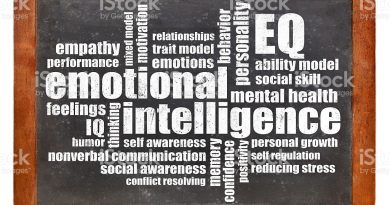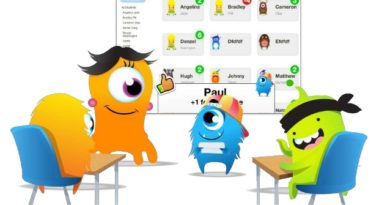LEARNING DIFFICULTIES FROM AN INCLUSIVE PERSPECTIVE.
We may assert that full personal development of students with learning difficulties (LD)and inclusion are the keys to cater for the natural variety of children´s abilities, intelligences, learning styles that we shall find in any group.
In general, the term “learning difficulty” is applied to students who are not making adequate progress within the school curriculum. However, the “garden variety” within the field of attention to diversity has to be somehow ordered and classified, regardless of the individual differences in each group of LD. In this light, some probable groups may be:
- Special education needs (SEN), derived from disability or serious behaviour problems. These children require support and specific attention due to disability (physical, cognitive or sensorial) and serious behaviour disorders. In these cases, early detection by qualified professionals (orientation team) is indispensable.
- High intellectual abilities or gifted students, who require special attention through curricular enrichment plans, so that they feel challenged and do not get bored in the FL
- Late entries into the educational system refer to those students who incorporate to schools and require specific programmes to favour their integration. This group comprises immigrant children with possible lack of knowledge of the Spanish or English language.
- Specific difficulties. Under this umbrella term there is a wide variety of children not diagnosed as SEN who show evident troubles in learning. They may be hindered by linguistic difficulties (i.e. dyslexia), a borderline intelligence, attention deficit hyperactivity disorder (ADHD), amongst many others.
- Compensatory measures for inequalities in education due to social, economic, cultural or familiar disadvantages derived from social, cultural or economic factors. These children may belong to ethnic minorities.
Broadly speaking, learning difficulties can occur as a result of any combination of the following influences (Westwood, 2003):
- Inadequate or inappropriate teaching,
- irrelevant and unsuitable curriculum,
- classroom environment,
- socio-economic disadvantage,
- poor relationship between student and teacher,
- poor school attendance,
- health problems,
- learning through the medium of a second language,
- loss of confidence,
- emotional or behavioural problems,
- below average intelligence,
- sensory impairment,
- specific information processing
Out of these causes we can infer that some learning problems are due to specific weaknesses in the learners; nevertheless, environmental factors, including teaching methods and the curriculum, are also frequent causes of difficulty. In line with this idea, Kershner (2000) remarks, “for most children whose progress causes concern in school, the problems are to do with experience and learning rather than intrinsic intellectual weaknesses or deficits”.
As common sense suggests, effective teaching practices to cater for diversity are those that provide SNES children with the maximum opportunity to learn. Notwithstanding, this evident statement requires more specification. Swanson (1999) draws the conclusion that the most effective method for teaching SNES students combines the following features:
- Carefully controlling and sequencing the curriculum content to be
- Providing abundant opportunities for practice and application of newly acquired knowledge and
- Ensuring high levels of participation and responding by the children (for example, answering the teacher’s questions; staying on task).
- Using interactive group
- Modelling by the teacher of effective ways to complete school
- Direct strategy training (teaching children how best to attempt new learning tasks).
- Making appropriate use of technology.
- Providing supplementary assistance (i.e. individual support, parental tutoring).
As we have already pointed out, experienced teachers are aware that students with learning difficulties are present in any group, due to the natural diversity of human individualities. Dealing with SNES in the FL area is such a hard nut to crack, since we do not usually count on the support measures implemented for other core areas (i.e. Mathematics, Spanish Language, occasionally supported with an extra teacher).
Indeed, children “come in all types” (Moon, 2000); in fact, there are many ways in which a class of pupils differ, quite apart from academic ability. Therefore, the FL teacher must know the procedures to cope with the natural diversity in any classroom and specific needs of educational support.
Considering this, we shall now lay out the general measures to be implemented in the FL class to meet the needs of a diverse group of learners:
- Creating a positive learning environment is of utmost importance to facilitate the learners´ active participation in the FL In this regard, students should feel that they are treated as individuals and that error is a natural part of FLL, since only by doing so they shall really take the risk to speak in a FL.
- Tasks adaptations. Although non-significant, students with SNES usually require teaching strategies or adaptations in the curriculum so as to provide learners with an adequate level of challenge. Some valuable examples may be:
- Graded tasks, which consist in the possibility to work on the same activity but at different levels.
- Another support measure is that of self-access activities. It means that students work on different activities and resources, individually or in groups. This technique can be applied both to fast finishers or slow learners.
- In addition to this, activities with different responses and open-ended activities, where students can mobilise their skills at their own level will be a valuable resource to meet their needs.
- Curricular adaptations. They can be classified between significant (the basic curricular elements are altered to some extent); and non-significant (the measures to cater for their individual needs are organisational or do not entail changes in the curricular elements (i.e. no suppression of some learning standards or contents). Some other times, the adaptation may come down to an enlargement of the timing in certain activities (give them enough time to respond).
- On the other hand, it is widely accepted that motivation is an essential factor for SNES If we cater for activities suitable for the different levels in the class, we will be contributing to the students’ motivation, as the possibility to succeed will be available for all of them and, as we all know, no motivation comes without success.
- We have seen that the legal framework establishes that SNES students must be supported by an individual action plan (or individualised action plan, IAP. This school document must be devised by the main teacher in coordination with the Teaching Team (all the teachers attending a group) and the orientation team (psychologists in charge of the elaboration of children´s diagnosis). The IAP should contain relevant information regarding each student with some kind of learning difficulty (i.e. relevant data in school file, support measures already put into practice, psycho pedagogic report, curricular competence level, teaching staff agreed measures, resources, collaboration with families, and the like). The IAP is the product of agreement amongst teachers and must be taken into account from all the areas.
Decisions on the measures to be implemented from the FL area.
Once the information has been gathered and analysed, the next step is to design appropriate FL strategies for the IAP. These measures will be related to:
- Adaptation of learning tasks, considering the individualities of the students with learning difficulties.
- Catering for the different needs: slow learners may be given an adapted or graded activity whereas strong learners can be challenged to deepen into further content.
- Integrating these students into heterogeneous groups, ensuring that they are asked to carry out a feasible activity for them, thus contributing to their integration and development of their self-esteem.
- Catering for pupils´ lack of interest or ability. Lack of interest may, in fact, hide a problem in a particular skill or aspect of the language. In this regard, the first step is to find out why a student is not interested (i.e. if the learning problem is more related to reading and writing due to a dyslexia diagnosis, first we may charge the weight on oral abilities for these learners to gain in confidence).
- Planning differentiated activities for children to make progress at their own level.
- Aiming the activities at the right level of challenge: once we have analysed the learning difficulties, we may grade the demand of an activity in accordance to the learning difficulty (i.e. in a cloze activity to write specific information from an oral text, these learners may count on the support of a multiple-choice answer).
- Communicative support. As we have previously seen through the legal documents, providing extra support is the cornerstone of the measures to be implemented. Students with learning difficulties should feel that they are treated as individuals; but at the same time, they should develop a sense of community (being accepted) and a sense of achievement. At this point, the concept of zone of proximal development (ZPD), based on Vygotsky, is especially helpful to design activities which bridge the gap between what children are able to carry out without any help or support and what is simply out of reach for them and, consequently, cannot be attempted. Seen in this light, the ZPD provides a valuable conceptual framework for situating the level of challenge in activities that may be appropriate for these learning difficulties to assure our students´ success. This balance between available skills and challenge will help our children feel emotionally positive and motivated towards a learning activity and confident about their own performance.
A final reflection about the measures to attend diversity from the FL area should focus on the relevance of reward and positive feedback. Decisively, the role of the teacher is paramount to instill a sense of progress and achievement. In order to do so, before elaborating the educational response towards the diversity in the group, I shall analyse the learners´ needs individually, having in mind that the effectiveness of diversity measures can be boosted simply by using caring language and ensuring motivation. In this sense, devising a rewarding system through stickers and making SNES children aware of their progress by using a digital portfolio is very likely to work.
Bibliography:
- Kershner, “Teaching children whose progress in learning is causing concern”. In D. Whitebread (ed.) “The psychology of teaching and learning in the primary school”. (pp. 277–299). London: Routledge-Falmer. 2000.
- Moon, J. “Children Learning English”. Macmillan Books for Teachers. Macmillan. 2000.
Video by: Teachings in Education




